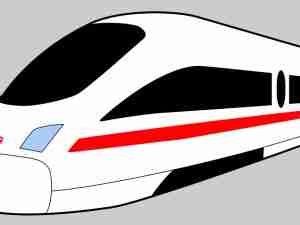Already actively operating in Europe, this three-way approach to wagon tracking using high-speed, robust track and trace RFID technologies, means train operators know exactly when, where and how often their passenger or freight cars and locomotives are used. This high speed collection of data not only enables companies to optimize the maintenance and management of their stock, but also means fully transparent, accurate and immediate data is available for ensuring safe, reliable operations and regulatory compliance are achieved.
Albis Technologies' TrainTracer (TT) transponders and readers from the ZOMOFI' product family, have been specifically designed by Albis' Zone Monitoring and Find Division for the intense operations and demanding conditions faced by the rail industry on a daily basis. The solution comprises a combination of trigger/reader units installed at selected locations in a railroad network and equipped with an interface (LAN/serial/modem/GSM link) to the operator's IT network, as well as the installation of hand-sized active RFID transponders on the cars and locomotives. These are of a weatherproof and extremely robust design, have a lifetime of 10+ years and are attached firmly to the underbody of the cars.
The benefits of the system mean each time the train composition passes, the identity of each individual car is recorded. The exact sequence of the passing cars is transmitted to the railroad's central computer. This occurs almost instantly, automatically and at speeds of 160+ km/h. The following information on each and every car and locomotive is therefore available at any time: last passage at the selected locations, number of kilometers traveled per day / month/ year and the travel sequence of cars in the composition. The transponders (TT tags) are impervious to summer and winter temperatures, contamination (dust- and waterproof casting), chemical and aggressive substances, vibration and impact. The TT tag can be bolted or riveted directly on to the metal underbody of the railroad car or locomotive. In addition to the passage and km detection mode, the TT tags have a further operating location in depot mode, which is active at the same time and enables data to be written and read by means of installed devices or manual readers at distances of 20 meters or more.
Rail companies already using the ZOMOFI' solution include Swiss operator, Rh'tische Bahn (RhB) and the Wengernalpbahn (WAB), both of which operate in the high altitude regions of Switzerland. RhB owns the largest network of all the private railways in Switzerland. The company operates most of the railways in the Swiss canton of Graub'nden and serves a number of major tourist centers, including St Moritz and Davos.
RhB has used the ZOMOFI' solution since 2009 to increase the quality and efficiency in planning and scheduling of vehicles and train formation. The company had a need to centralize planning, automatically detect vehicle locations and optimize wagon deployment for its 370 passenger carriages, 950 freight cars and 130 locomotives.
With the vehicle location system, RhB has benefited from the following process improvements:
- KM performance for each car and locomotive is captured and evaluated
- disposition of the coaches can be done optimally, allowing for down-ranking
- last crossing data is available for selected locations
- location in custody is aided by the additional long range function of the transponders and the TT handheld readers
Similarly, WAB's deployment in 2011 of active RFID technology from Albis for both transponders and the reading stations from the ZOMOFI' family of products allows the company to collect past rides, train times and frequency of use of the cars







